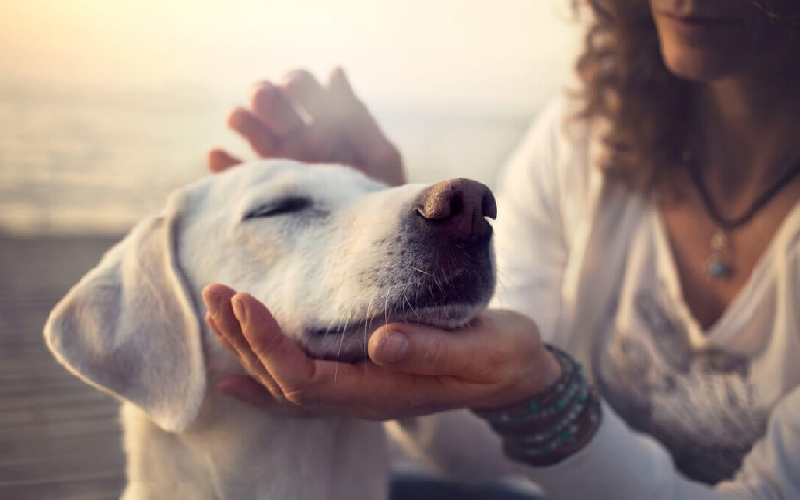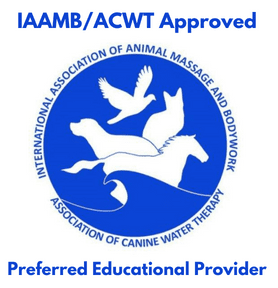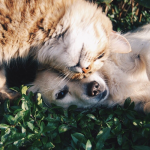Reiki is a type of energy healing — a channeling of healing energy to a person’s body to bring that person’s energy fields into balance. Animal Reiki is simply Reiki with an animal as the client rather than a person.
Anyone can learn the technique of Animal Reiki in order to help their own pets or farm animals become balanced on physical, emotional, and energetic levels. If a person wants to perform this service on the animals belonging to other people — to become an Animal Reiki practitioner — then it’s best that the person become certified in Animal Reiki.
Contents
The Five Elements of Reiki
There are several fields, or techniques, or energy healing, of which Reiki is one. The basic concepts that make up Reiki originated thousands of years ago in Tibet. The form we know it to be come from Mikao Usui — a Japanese Buddhist who practiced and taught Reiki in the 1920s. The system of Reiki is made up of five specific elements:
- Precepts (Gokai)
- Meditations and Techniques
- Hands-on Healing (Tenohira)
- Symbols (Shirushi) and Mantras (Jumon)
- Attunements (Reiju)
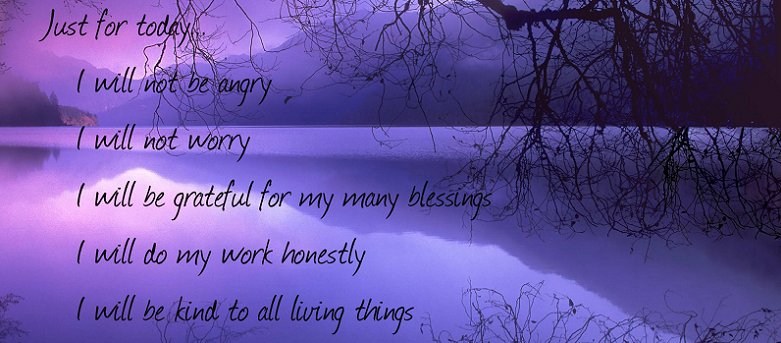
Precepts (Gokai)
A precept is a general rule that is intended to regulate thought or behavior. For centuries precepts have been used as conduct guidelines in many religious and spiritual practices. Reiki has a set of five precepts, or principles, that together make up one of the five elements of Reiki. These five principles (Gokai in Japanese) serve as a foundation of Reiki, and key to the other four elements of Reiki.
The principles, or precepts, are simple but powerful. When mentioned, they are preceded by the words “For today only…”
- Do not anger
- Do not worry
- Be humble
- Be honest in your work
- Be compassionate to yourself and others
Meditations and Techniques
There are several aspects to the practice of Reiki, but traditional Reiki emphasizes three main techniques:
- Seishin Toitsu is a mind-unifying, visualization meditation. Seishin means soul, mind, spirit, or intention, while Toitsu means to unite.
- Joshin Kokyu Ho is a meditation that focuses the mind, improves concentration, and clears the energy field through controlled breathing. Joushin means meditative concentration, Kokyu means breath or respiration, and Ho means process, method, or teaching.
- Kenyoku Ho is a cleansing routine used to cleanse the mind, body, and spirit. Kenyoku means dry bathing, while Ho means process, method, or teaching.
Hands-on Healing (Tenohira)
The word Reiki is from the Japanese words Rei, which means universal, and Ki (also referred to as qi or ch’i), which refers to the crucial life force energy that is believed to flow through all living things.
Tenohira is the act of supporting the transfer of Ki from one living thing to another. This is the part of Reiki that most people commonly understand, experience, and think of when they first hear about Reiki. In Tenohira, the Reiki practitioner places their hands on, or just above, the body with the intention of having Ki pass from them to another. It’s important to understand that Ki is not forced, or pushed, by the hands, but rather is drawn through the hands to the recipient.
When the recipient’s body senses, or is aware of, the Ki, the body takes the energy where it is needed. Because of this, a person who practices Reiki is not considered a healer, but instead is thought of as a practitioner. The practitioner isn’t actually doing healing — they are simply facilitating the flow of energy to support the recipient’s use of that energy as appropriate for the recipient.
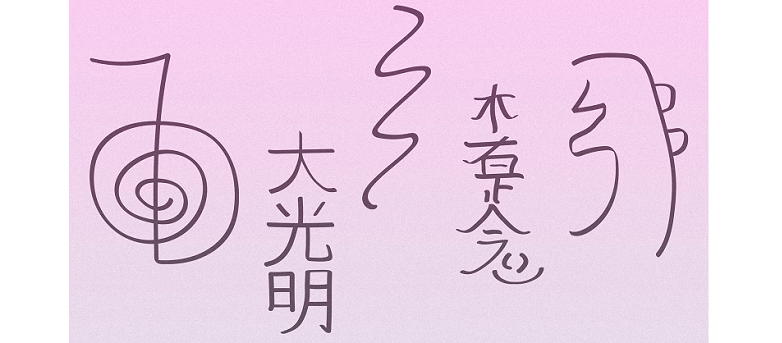
Symbols (Shirushi) and Mantras (Jumon)
The basic concept of Reiki is that as a person balances the energies of heaven and earth internally, the person’s energy of the heart is cleared. This implies that Ki energy is really three energies:
- Earth Ki is also called Original Energy, and is the energy a person is born with. It is the energetic connection between a person and the universal life force.
- Heavenly Ki is the energy connected with a person’s spirit. When this energy is balanced a person can see beyond the immediate.
- Heart Ki is connected with emotions. Heart Ki is the connection of human energy with human experience, and is thought of as the merging of Heaven and Earth, or body and mind.
In Reiki, symbols (shirushi in Japanese) and mantras (jumon in Japanese) are tools that are used to invoke, or call on, one or more of the specific Ki energies during a Reiki session. Reiki has four symbols and four mantras for the purpose of awakening a Reiki student’s inner energy. With time and experience, though, these tools become less important and less necessary, as the Reiki energies become a part of the practitioner’s everyday being.
Attunements (Reiju)
Attunements are a part of the process of being taught the practice of Reiki. An attunement is the process of giving and accepting energy — the Reiki teacher transfers Reiki to the student. The Japanese for attunement is reiju, which translates to spiritual offering or blessing.
An attunement is a non-physical event meant to bless and initiate a Reiki student, aligning, balancing, clearing, and opening the students energies. In a sense, the teacher is simply creating a safe energetic space in which the student can draw in the energy that student needs. An attunement strengthens student’s spirituality and energy, and is typically performed at the end of a Reiki level of teaching.
The Three Levels of Reiki Training
As just discussed, Reiki is made up of five elements, from precepts to attunements. The elements shouldn’t be confused with the levels of Reiki. Reiki has three levels of training, and each Reiki level includes some of the five Reiki elements.
- Level 1 (Shoden) consists of entry-level Reiki training.
- Level 2 (Okuden) teaches some of the Reiki symbols and distant-Reiki techniques. The student becomes a Reiki practitioner at the end of this level.
- Level 3 (Shinpiden) is considered the Master level, and at the end of this level the student can teach Reiki to others if so desired.

Reiki Level 1 (Shoden)
Level 1 serves as an initiation to Reiki, and is open and available to anyone interested in learning about Reiki. This first level, which is called Shoden in Japanese (meaning First Teachings) is all about the foundations of Reiki.
Foundational topics include what Reiki energy (Ki) is and how a person connects to it, the basics of how a person uses Reiki to help themselves and others heal spiritually, emotionally, physically, and mentally. Before practicing Reiki on others (human or animal), it’s best to understand how to practice it on oneself — so here in Level 1 a student learns how to connect to the universal life force energy. By encouraging a student to practice self-Reiki, the student is able to work through their own issues and obstacles, better preparing the student to practice Reiki on others. After completion of the course the student receives a Level 1 Reiki certification.
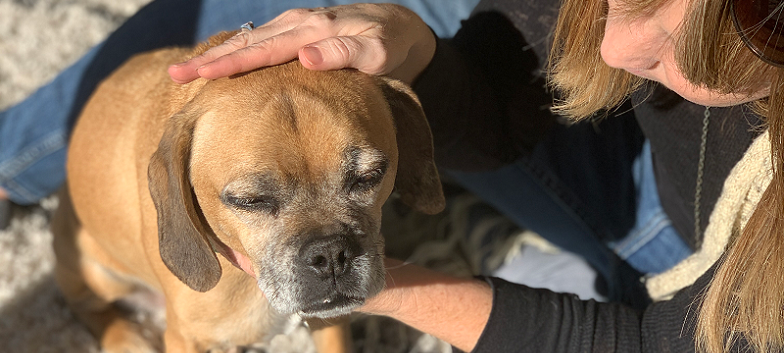
Reiki Level 2 (Okuden)
Level 2 expands on the teachings of Level 1, and is open only to students who have successfully completed Level 1. Here the emphasis switches from self-Reiki to practicing Reiki on others (and for Animal Reiki, those others will be animals).
Level 2, called Okuden in Japanese (meaning Inner Teachings), deepens and broadens the connection with the various Reiki energies (Earth Ki, Heavenly Ki, and Heart Ki). In this level students are taught the details of symbols (shirushi) and mantras (jumon) of Reiki. These tools allow the student to bring Ki into their own lives and the lives of others — including by sending healing energy over distances to help others (human or animal). Completion of the course grants the student a Level 2 Reiki certification.
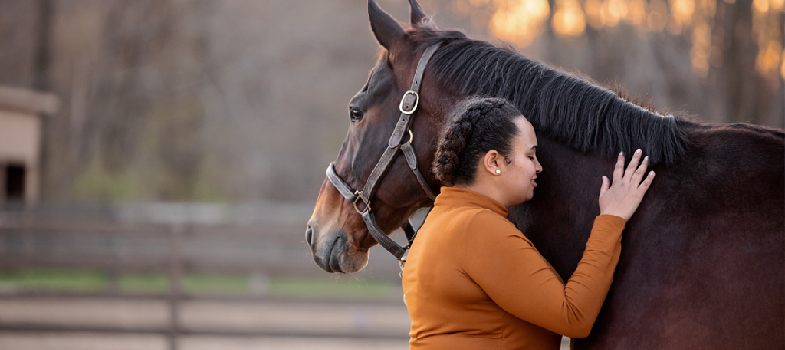
Reiki Level 3 (Shinpiden)
Level 3, or Shinpiden (Mystery Teachings) in Japanese, is considered the Reiki Master Level. Level 2 typically includes Hatsurei Ho — the visualization of breath as light, entering as as a person inhales and exiting upon exhaling. Here in Level 3 the importance of light is emphasized by the teaching of Dai Komyo — Great Bright Light. To be the light means a life of striving to bring more wisdom and compassion to all a person does.
Upon completion of Level 3 a student is now able to not only competently practice Reiki on others, but also receives certification that empowers the student to teach Reiki to others, should the student so desire. So completion of Level 3 means a person can be both a Reiki practitioner and a Reiki teacher.
What Is Animal Reiki?
Animal Reiki has much in common with “normal” Reiki — Reiki that was originally intended for healing humans. That’s why this article has devoted sections to discuss the basics of Reiki, such as the five elements of Reiki and the three levels of Reiki training. As it is for humans, Animal Reiki is a non-invasive, simple alternative therapy for balancing emotional, mental, and physical energy levels.
Humans share the world with animals, so using Reiki with animals is natural. Reiki becomes a means of communicating with animals at a level that differs from what we are used to. As humans we are aware of many of the things that occur in the world of animals, but there are also things animals feel and experience that we aren’t normally aware of. Reiki helps guide and support us as we make connections that enable us to much better communicate with animals. Here when we refer to communicating we don’t mean talking, but instead we’re connecting with animals by sensing and being with them in a non-verbal but very authentic manner.
Animals are naturally sensitive to energy and welcome receiving Reiki energy. A practitioner can perform Reiki sessions directly, in the presence of an animal, or indirectly, across any distance. Energy is common to all kinds of animals, so Reiki therapy works with all types of animals, from domestic pets to farm animals to wildlife.
A practitioner’s Animal Reiki session isn’t intrusive, so it doesn’t invade an animal’s space. And it doesn’t involve a particular medical diagnosis — it offers healing energy that an animal draws on in its own way and time.
Becoming an Animal Reiki Practitioner
Why would a person take the online courses to become an practitioner of Animal Reiki? There are a few reasons, including the following:
- View animals in a new and positive way
- Challenge yourself to embrace and overcome the dark, difficult times animals encounter
- Better celebrate and appreciate the special gifts animals give you every day
- Relieve the suffering of animals while also staying respectful of the animals independence and agency
Reiki is a meditative technique that will bring your heart and mind into balance, enabling you to be more compassionate and kind to yourself and other people. Animal Reiki extends that power to do the same for animals.
With the proper training and certification — such as through the Let Animals Lead® method listed in the below Animal Reiki Certification Resources section — you become trained in the most professional, thorough, ethical, and effective Animal Reiki methods. You develop a mindset that focuses on the mindfulness that allows you to view animals as both beneficiaries of your energy and teachers themselves.
Animals have a way of appreciating humans who practice Reiki as a partnership shared between the human and the animal. Animals will become drawn to positivity, peace, and grounding that you, as an Animal Reiki practitioner, will radiate.
Animal Reiki Certification Resources
More information about the following Animal Reiki courses is available at the Animal Reiki Source website. Animal Reiki Source is approved by the International Association of Animal Massage & Bodywork/Association of Canine Water Therapy as an Approved Educational Provider.
- 8 weekly online video teachings, each with guided meditations and written supplemental materials
- 7 hour-long live sessions via webinar, with Q and A time for personal feedback and coaching
- Daily practice assignments and weekly homework
- The e-book Healing Virtues: Transforming Your Practice Through the Animal Reiki Code of Ethics
- Beautiful certificate — an official certification serving as a prerequisite to a Level 2 course
- 8 weekly online video teachings, each with guided meditations and written supplemental materials
- Beautiful certificate — an official certification serving as a prerequisite to a Level 3 course
- 8 weekly online video teachings, each with guided meditations and written supplemental materials
- Instructions on how to create lesson plans for your own students
- 8 weekly online video teachings, each with guided meditations and written supplemental materials
- Beautiful certificate of completion
- Permission to teach in-person Level 1, 2 and 3 Let Animals Lead® method courses


